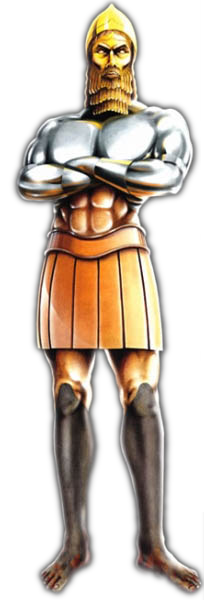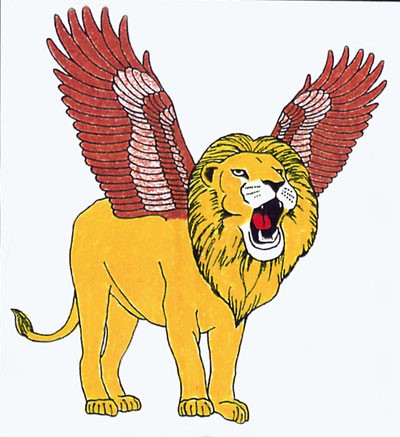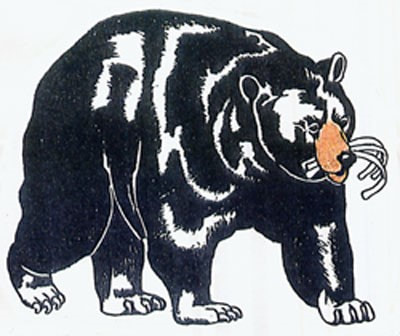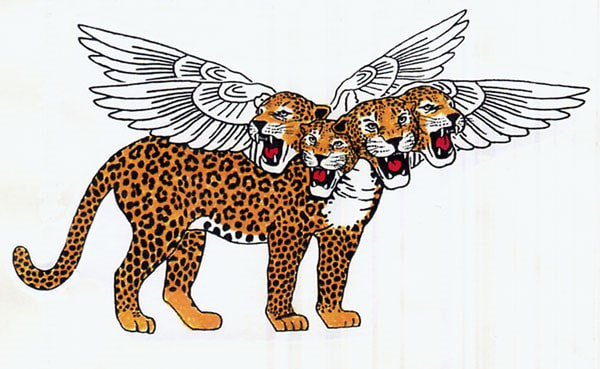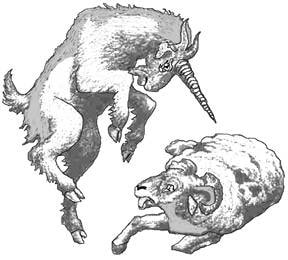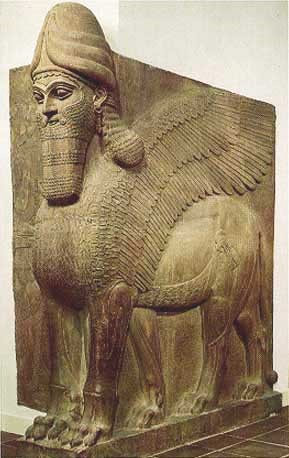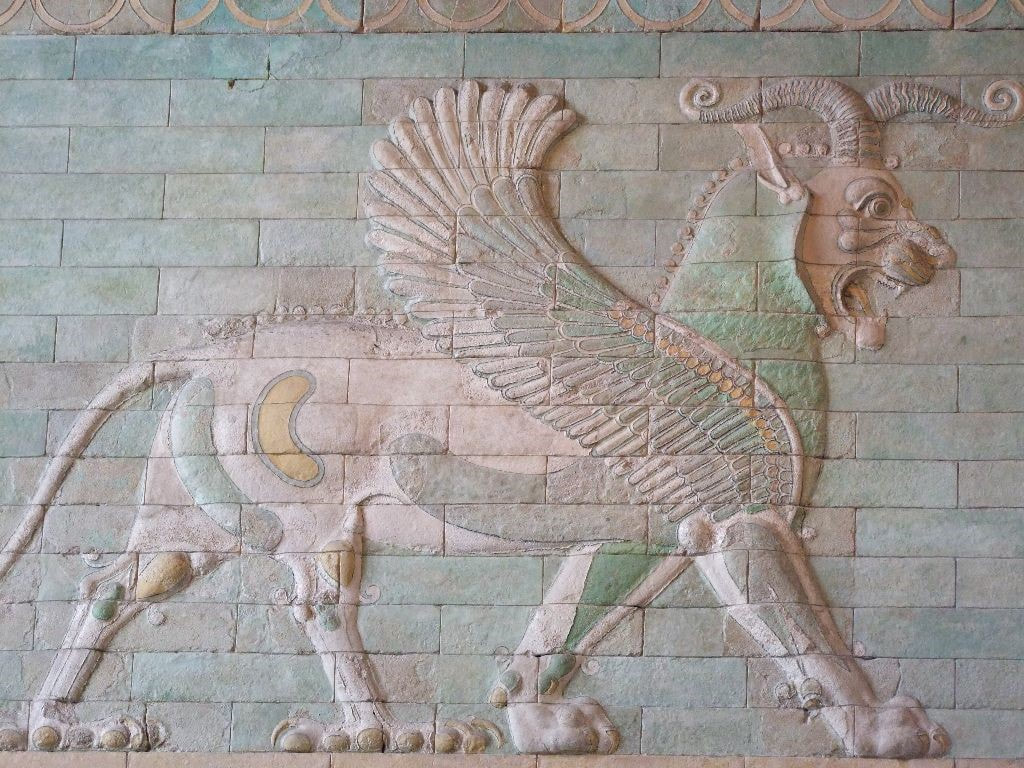The Book of Daniel: Past and Future
An Overview of the Prophecies in Daniel 2, 7, 8, and 11
Around 605 BC, the Babylonian army of King Nebuchadnezzar II invaded the kingdom of Judah and besieged Jerusalem. The city quickly fell, and the triumphant Babylonians carried many Jews and much plunder back to Babylon. Among the captives was a young boy named Daniel. He would not only grow up to be one of the most revered prophets of the entire Bible, but also a significant political figure for the next seventy years or so. He served at least two kings of Babylon as a high-ranking official, and after the fall of Babylon to the Persians, served the Persian governor as well. Though his life was long, Daniel’s fame has outlasted it by millennia. No fewer than six cities in modern Iraq and Iran claim to be the site of his tomb, and they have drawn thousands of Muslim, Jewish, and Christian pilgrims!
In addition to recounting some of the major events of Daniel’s life, the book of Daniel describes a series of dreams and prophetic visions attributed both to Daniel and to his first sovereign, King Nebuchadnezzar. The visions of the book of Daniel stand alongside those of Revelation as some of the most cryptic, bizarre, and colorful in the entire Bible. This paper will give an overview of the prophecies from the book of Daniel, namely those from chapters 2, 7, 8, and 11. How much of the prophecy in Daniel has already been fulfilled, and how much remains to be fulfilled in the future? This is the primary question to be answered here.
Daniel 2: Introduction to The Great Image and Four Earthly Kingdoms
This first prophetic vision found in the book of Daniel is in chapter 2, which contains King Nebuchadnezzar’s dream of a great image. This is also one of the most famous prophecies in the Bible. Here’s the dream, found in Dan. 2:27-45:
Daniel answered in the presence of the king, and said, “The secret which the king has demanded, the wise men, the astrologers, the magicians, and the soothsayers cannot declare to the king. But there is a God in heaven who reveals secrets, and He has made known to King Nebuchadnezzar what will be in the latter days. Your dream, and the visions of your head upon your bed, were these: As for you, O king, thoughts came to your mind while on your bed, about what would come to pass after this; and He who reveals secrets has made known to you what will be. But as for me, this secret has not been revealed to me because I have more wisdom than anyone living, but for our sakes who make known the interpretation to the king, and that you may know the thoughts of your heart. |
The image, as Daniel told the king, represented a succession of four kingdoms or empires, the first of which was Babylon, ruled over by Nebuchadnezzar himself. While the others are not identified, we know from history that the Babylonian Empire was succeeded by the Medo-Persian Empire, and then by the Greco-Macedonian Empire. The fourth kingdom is generally presumed to be the Roman Empire, which ruled Jerusalem after a series of Greek empires had ruled it. The final kingdom, the stone cut out without hands, is obviously the kingdom of God, as Daniel explained in his interpretation of the dream.
The concept of four great kingdoms conquered by the kingdom of God is not unique to the book of Daniel. Let’s look at Zech. 1:18-20: “Then I raised my eyes and looked, and there were four horns. And I said to the angel who talked with me, ‘What are these?’ So he answered me, ‘These are the horns that have scattered Judah, Israel, and Jerusalem.’ Then the Lord showed me four craftsmen. And I said, ‘What are these coming to do?’ So he said, ‘These are the horns that scattered Judah, so that no one could lift up his head; but the craftsmen are coming to terrify them, to cast out the horns of the nations that lifted up their horn against the land of Judah to scatter it.’”
In the last verse, the four horns are identified as belonging to “nations that lifted up their horn against the land of Judah,” which of course means that there are four nations here. The events of the first chapter of Zechariah take place after God’s kingdom is set up on the earth, as verses 16-17 make plain. So once again, the Bible tells of four kingdoms which God uses to punish Israel and Judah, and then overthrows.
Daniel 7: Introduction to The Four Beasts
Daniel 7 contains the first of a series of visions by Daniel himself. He dreamed of four great beasts or monsters, as we might say, ascending out of the Mediterranean Sea. Here’s Dan. 7:2-14:
The concept of four great kingdoms conquered by the kingdom of God is not unique to the book of Daniel. Let’s look at Zech. 1:18-20: “Then I raised my eyes and looked, and there were four horns. And I said to the angel who talked with me, ‘What are these?’ So he answered me, ‘These are the horns that have scattered Judah, Israel, and Jerusalem.’ Then the Lord showed me four craftsmen. And I said, ‘What are these coming to do?’ So he said, ‘These are the horns that scattered Judah, so that no one could lift up his head; but the craftsmen are coming to terrify them, to cast out the horns of the nations that lifted up their horn against the land of Judah to scatter it.’”
In the last verse, the four horns are identified as belonging to “nations that lifted up their horn against the land of Judah,” which of course means that there are four nations here. The events of the first chapter of Zechariah take place after God’s kingdom is set up on the earth, as verses 16-17 make plain. So once again, the Bible tells of four kingdoms which God uses to punish Israel and Judah, and then overthrows.
Daniel 7: Introduction to The Four Beasts
Daniel 7 contains the first of a series of visions by Daniel himself. He dreamed of four great beasts or monsters, as we might say, ascending out of the Mediterranean Sea. Here’s Dan. 7:2-14:
Daniel spoke, saying, “I saw in my vision by night, and behold, the four winds of heaven were stirring up the Great Sea. And four great beasts came up from the sea, each different from the other. The first was like a lion, and had eagle’s wings. I watched till its wings were plucked off; and it was lifted up from the earth and made to stand on two feet like a man, and a man’s heart was given to it. |
So here we have a description of four great beasts which are slain by the kingdom of God. Let’s pick up the account again in Dan. 7:17-27, which gives the interpretation:
‘Those great beasts, which are four, are four kings which arise out of the earth. But the saints of the Most High shall receive the kingdom, and possess the kingdom forever, even forever and ever.’
“Then I wished to know the truth about the fourth beast, which was different from all the others, exceedingly dreadful, with its teeth of iron and its nails of bronze, which devoured, broke in pieces, and trampled the residue with its feet; and the ten horns that were on its head, and the other horn which came up, before which three fell, namely, that horn which had eyes and a mouth which spoke pompous words, whose appearance was greater than his fellows.
“I was watching; and the same horn was making war against the saints, and prevailing against them, until the Ancient of Days came, and a judgment was made in favor of the saints of the Most High, and the time came for the saints to possess the kingdom.
“Thus he said:
‘The fourth beast shall be
A fourth kingdom on earth,
Which shall be different from all other kingdoms,
And shall devour the whole earth,
Trample it and break it in pieces.
The ten horns are ten kings
Who shall arise from this kingdom.
And another shall rise after them;
He shall be different from the first ones,
And shall subdue three kings.
He shall speak pompous words against the Most High,
Shall persecute the saints of the Most High,
And shall intend to change times and law.
Then the saints shall be given into his hand
For a time and times and half a time.
‘But the court shall be seated,
And they shall take away his dominion,
To consume and destroy it forever.
Then the kingdom and dominion,
And the greatness of the kingdoms under the whole heaven,
Shall be given to the people, the saints of the Most High.
His kingdom is an everlasting kingdom,
And all dominions shall serve and obey Him.’
The angel told Daniel in his dream that the four beasts represented four kingdoms, which will be supplanted by God’s kingdom. This parallels Nebuchadnezzar’s dream in Daniel 2, as well as the prophet Zechariah’s vision of four horns. Unlike in chapter 2, though, there is no identification of any of these empires in this chapter.
Daniel 8: Introduction to The Ram and the Goat
Shortly after his dream of the four beasts, Daniel had another dream. This time, he dreamed of a ram and a male goat. In Dan. 8:3-12, the prophet wrote:
Daniel 8: Introduction to The Ram and the Goat
Shortly after his dream of the four beasts, Daniel had another dream. This time, he dreamed of a ram and a male goat. In Dan. 8:3-12, the prophet wrote:
Then I lifted my eyes and saw, and there, standing beside the river, was a ram which had two horns, and the two horns were high; but one was higher than the other, and the higher one came up last. I saw the ram pushing westward, northward, and southward, so that no animal could withstand him; nor was there any that could deliver from his hand, but he did according to his will and became great. |
In this vision, there is no description of four kingdoms, though there is a little horn that sounds very similar to the little horn in chapter 7. Let’s pick up the account again in Dan. 8:16-26 and find the interpretation:
And I heard a man’s voice between the banks of the Ulai, who called, and said, “Gabriel, make this man understand the vision.” So he came near where I stood, and when he came I was afraid and fell on my face; but he said to me, “Understand, son of man, that the vision refers to the time of the end.”
Now, as he was speaking with me, I was in a deep sleep with my face to the ground; but he touched me, and stood me upright. And he said, “Look, I am making known to you what shall happen in the latter time of the indignation; for at the appointed time the end shall be. The ram which you saw, having the two horns—they are the kings of Media and Persia. And the male goat is the kingdom of Greece. The large horn that is between its eyes is the first king. As for the broken horn and the four that stood up in its place, four kingdoms shall arise out of that nation, but not with its power.
“And in the latter time of their kingdom,
When the transgressors have reached their fullness,
A king shall arise,
Having fierce features,
Who understands sinister schemes.
His power shall be mighty, but not by his own power;
He shall destroy fearfully,
And shall prosper and thrive;
He shall destroy the mighty, and also the holy people.
“Through his cunning
He shall cause deceit to prosper under his rule;
And he shall exalt himself in his heart.
He shall destroy many in their prosperity.
He shall even rise against the Prince of princes;
But he shall be broken without human means.
“And the vision of the evenings and mornings
Which was told is true;
Therefore seal up the vision,
For it refers to many days in the future.”
Now that the interpretation is revealed, the parallel between this chapter and chapters 2 and 7 is also revealed. Remember that the first of the four successive empires was identified in chapter 2 as Babylonia. This vision in chapter 8 tells about the next two empires that followed the Babylonian Empire: the Medo-Persian Empire and the Greco-Macedonian Empire.
Interpretation of the Visions
All three of the visions -- the great image, the four beasts, and the ram and the goat, are parallel to one another, as illustrated in the following table. The same succession of empires is revealed three times, using different imagery each time.
Interpretation of the Visions
All three of the visions -- the great image, the four beasts, and the ram and the goat, are parallel to one another, as illustrated in the following table. The same succession of empires is revealed three times, using different imagery each time.
|
The head of gold and the lion with eagle’s wings both represent the Babylonian Empire. Babylonian art often featured lions, and sometimes winged lions as well. In addition, the Babylonians often depicted winged lions with the heads of men. Examples are shown in the two illustrations to the right, which are from the ancient city gates of Babylon.
The chest and arms of silver, the bear raised on one side with three ribs in its mouth, and the ram with two horns all represent the Medo-Persian Empire, which succeeded the Babylonian Empire as the dominant power in the Near East. At the fall of the Assyrian Empire, the Medes and the Babylonians divided its remains, and also went on to conquer other territories. Persia was only an insignificant province in the vast Median Empire. This changed with the ascension of Cyrus the Great to the Persian throne around 559 BC. Cyrus led a Persian rebellion against the Medes and, in 549 BC, captured the Median capital and deposed the Median king, Astyages. To solidify control over the Median kingdom, Cyrus had himself crowned king of Media as well as Persia. The new empire came to be known as the Medo-Persian Empire, and was administered by Medes as well as Persians, but the king was always a Persian. Thus, the two horns of the ram “were high, but one was higher than the other, and the higher one came up last” (Dan. 8:3). This also explains why the bear was “raised up on one side” (Dan. 7:5). |
After securing his control over the former provinces of the Median Empire, Cyrus moved westward and conquered the Lydian Empire, which had defied the Medes for decades (c. 547 BC). Next, he turned his attention to the west and conquered the Babylonian Empire, capturing the city of Babylon in 539 BC. Cyrus died in battle against a Scythian tribe not long afterward, around 530 BC. His son Cambyses conquered Egypt in 525 BC. Thus the united Medo-Persian Empire had conquered three major kingdoms in the Near East, represented by the three ribs in the mouth of the bear in Dan. 7:5. The ram in chapter 8 had pushed “westward, northward, and southward” (Dan. 8:4), and the three kingdoms lay in those general directions: Lydia was to the north of Jerusalem; Babylon, though east of Jerusalem, was to the west of Persia; and Egypt was south of Jerusalem.
The belly and thighs of bronze, the leopard with four heads and four wings of a bird, and the male goat all represent the Greco-Macedonian Empire founded by Alexander the Great. The male goat’s one “large horn that is between its eyes is the first king” (Dan. 8:21), that is, Alexander himself. Just as the goat destroyed the ram, so Alexander destroyed the Medo-Persian Empire and conquered most of its former provinces. Shortly after completing his conquest, he died in his chosen capital of Babylon (323 BC). Following his death, his generals divided up his empire, briefly forming four separate empires. Thus, we read in Dan. 8:8, “Therefore the male goat grew very great; but when he became strong, the large horn was broken, and in place of it four notable ones came up toward the four winds of heaven.” The four heads of the leopard also represent these four divisions of Alexander’s empire.
Dan. 8:9 continues, “And out of one of them [the four horns] came a little horn which grew exceedingly great toward the south, toward the east, and toward the Glorious Land.” The account later describes this little horn’s bitter persecution of God’s people and opposition to God himself. The little horn represents Antiochus IV Epiphanes, who became king of the Seleucid Empire, one of the four divisions of Alexander’s empire, in 175 BC. Antiochus was a ruthless dictator and a madman, infamous for attempting to impose Greek religion and culture on the Jews. He profaned the temple, set up a statue of Zeus in it, and sacrificed swine on the altar. He also commanded Jews not to be circumcised, not to keep Biblical Sabbaths or holy days, not to read the scriptures at all, to worship Greek gods, and to eat pork. This drove the Jews to armed resistance, which continued for the rest of his reign. His death in 164 BC, following a reign of 11 years, was celebrated by Jews and Greeks alike.
The legs of iron and feet of iron and clay represent the Roman Empire, as does the beast with ten horns. The Roman Empire was the best organized and most enduring of all the empires Daniel prophesied, strong as iron. The ten horns of the beast and ten toes of the image are often interpreted as being ten Germanic kingdoms that overthrew the Roman Empire, namely the Anglo-Saxons (Britain), the Visigoths (Spain), the Vandals (North Africa), the Heruli (Italy), the Burgundians (Switzerland), the Ostrogoths (Italy), the Lombards (N. Italy), the Franks (France), the Suevi (Portugal), and the Alemanni (S. Germany). Three horns were plucked out by the roots, which are interpreted as the Vandals, the Heruli, and the Ostrogoths, all of whom were uprooted and destroyed after a relatively brief existence.
The identification of the first three empires is certain, since they are identified by name in Dan. 2:37 and Dan. 8:20-21. The fourth empire, Rome, is not identified by name, but is known from history as the empire which succeeded those three.
The final kingdom, which destroys all the others, is, of course, the kingdom of God. Daniel explicitly stated this in chapters 2 and 7. However, God’s kingdom obviously did not succeed the Roman Empire as apparently prophesied. So is there more to the story?
Is There a Future Application?
When one goes back through the visions, in fact, a few other problems jump out as well. The description of Nebuchadnezzar in Dan. 2:38 as ruling over all “the children of men” seems like a terribly gross exaggeration, as the Babylonian Empire not only was tiny by modern standards, but it was not even the biggest empire of its day: the Median Empire was much bigger. The fourth kingdom is described in Dan. 2:40 as crushing all the others (apparently the three before it), and in Dan. 7:23 as “devour[ing] the whole earth.” Of the three previous empires, the Roman Empire did conquer Greece, occupied Babylonia only very briefly before being forced to abandon it, and never even entered Persia. By no means did it ever even come close to conquering the whole earth, or even the entire world of the Bible. In terms of land area, in fact, the Roman Empire is only the 18th largest empire of all time!
So the question is, Does the book of Daniel simply describe a series of empires that are long since dead and gone, or does it have another application? It is the opinion of this writer that the prophecies about the four empires were intended mainly for the last days, and that the ancient fulfillments were a foreshadow of what is to happen before Christ’s return.
Let’s turn back to Dan. 2. Before telling Nebuchadnezzar the interpretation of his dream, Daniel stated, “But there is a God in heaven who reveals secrets, and He has made known to King Nebuchadnezzar what will be in the latter days” (Dan. 2:28). The word “latter” used in this verse is Strong’s Concordance #320, and means “end, latter.” In other words, God “has made known to King Nebuchadnezzar what will be in the end of days!” Now it appears that the main purpose of the vision was to show what will happen in the last days before Christ’s return, not simply to foretell a succession of ancient empires that are now long since dead and gone.
Dan. 8 makes a similar statement, but even more explicitly. The angel Gabriel, interpreting Daniel’s vision of the ram and the goat, explained, “Understand, son of man, that the vision refers to the time of the end” (Dan. 8:17). So, while this vision foretold the rise of Medo-Persia and of Greece, it really pointed to the time of end! Those two ancient empires were a foreshadow of empires at the end time.
Finally, let’s go to Dan. 7. Here in this passage, there can be no mistaking the purpose and intent of these three prophecies. First, in Dan. 7:9-10, is a description of God judging the four empires, represented here by the four beasts. Now look at vv. 11-12: “I watched then because of the sound of the pompous words which the horn [the little horn before which three were plucked out by the roots] was speaking; I watched till the beast was slain, and its body destroyed and given to the burning flame. As for the rest of the beasts, they had their dominion taken away, yet their lives were prolonged for a season and a time.” Could this be any clearer? All of the beasts will exist when Jesus returns! The fourth beast will be destroyed, while the others will be allowed to live for a short time.
So what, then, will be the future fulfillment of these prophecies? There will evidently be a succession of four empires before Christ returns -- a modern revival, so to speak, of the Babylonian, Medo-Persian, Greek, and Roman empires. Since these events do not appear to have yet begun to happen, any interpretation involving modern nations would be mostly speculative. A few clues are given, however. The ram in Dan. 8:4 is described as pushing “westward, northward, and southward.” Since the east is left out, it is quite possible that the second empire will be an eastern power. The third empire is specifically stated in Dan. 8:5 as coming from the west, or being a western power. The first empire, remember, was a lion with eagle’s wings, while the third was a leopard with the wings of a bird. Since the two are similar, we could speculate that the first empire will also be a western power. It will be subdued by an eastern power, which will in turn be subdued by a western power similar to the first. This power will then split into four, scattered to the north, the south, the east, and the west. One of these four divisions will apparently become the fourth empire, and out of the fourth empire will come a ruler described as a little horn in Dan. 7:8, 7:11, 7:21-22, and 8:9-14. In both chapters, this little horn exhibits the exact same characteristics. Dan:7:25 summarizes this man as follows: “He shall speak pompous words against the Most High, shall persecute the saints of the Most High, and shall intend to change times and law. Then the saints shall be given into his hand for a time and times and half a time.” Dan. 8:24 adds, “His power shall be mighty, but not by his own power; he shall destroy fearfully, and shall prosper and thrive; he shall destroy the mighty, and also the holy people.”
It takes little imagination to see a parallel between the little horn of Daniel 7 and 8 and this passage found in Rev. 13:1-7:
The belly and thighs of bronze, the leopard with four heads and four wings of a bird, and the male goat all represent the Greco-Macedonian Empire founded by Alexander the Great. The male goat’s one “large horn that is between its eyes is the first king” (Dan. 8:21), that is, Alexander himself. Just as the goat destroyed the ram, so Alexander destroyed the Medo-Persian Empire and conquered most of its former provinces. Shortly after completing his conquest, he died in his chosen capital of Babylon (323 BC). Following his death, his generals divided up his empire, briefly forming four separate empires. Thus, we read in Dan. 8:8, “Therefore the male goat grew very great; but when he became strong, the large horn was broken, and in place of it four notable ones came up toward the four winds of heaven.” The four heads of the leopard also represent these four divisions of Alexander’s empire.
Dan. 8:9 continues, “And out of one of them [the four horns] came a little horn which grew exceedingly great toward the south, toward the east, and toward the Glorious Land.” The account later describes this little horn’s bitter persecution of God’s people and opposition to God himself. The little horn represents Antiochus IV Epiphanes, who became king of the Seleucid Empire, one of the four divisions of Alexander’s empire, in 175 BC. Antiochus was a ruthless dictator and a madman, infamous for attempting to impose Greek religion and culture on the Jews. He profaned the temple, set up a statue of Zeus in it, and sacrificed swine on the altar. He also commanded Jews not to be circumcised, not to keep Biblical Sabbaths or holy days, not to read the scriptures at all, to worship Greek gods, and to eat pork. This drove the Jews to armed resistance, which continued for the rest of his reign. His death in 164 BC, following a reign of 11 years, was celebrated by Jews and Greeks alike.
The legs of iron and feet of iron and clay represent the Roman Empire, as does the beast with ten horns. The Roman Empire was the best organized and most enduring of all the empires Daniel prophesied, strong as iron. The ten horns of the beast and ten toes of the image are often interpreted as being ten Germanic kingdoms that overthrew the Roman Empire, namely the Anglo-Saxons (Britain), the Visigoths (Spain), the Vandals (North Africa), the Heruli (Italy), the Burgundians (Switzerland), the Ostrogoths (Italy), the Lombards (N. Italy), the Franks (France), the Suevi (Portugal), and the Alemanni (S. Germany). Three horns were plucked out by the roots, which are interpreted as the Vandals, the Heruli, and the Ostrogoths, all of whom were uprooted and destroyed after a relatively brief existence.
The identification of the first three empires is certain, since they are identified by name in Dan. 2:37 and Dan. 8:20-21. The fourth empire, Rome, is not identified by name, but is known from history as the empire which succeeded those three.
The final kingdom, which destroys all the others, is, of course, the kingdom of God. Daniel explicitly stated this in chapters 2 and 7. However, God’s kingdom obviously did not succeed the Roman Empire as apparently prophesied. So is there more to the story?
Is There a Future Application?
When one goes back through the visions, in fact, a few other problems jump out as well. The description of Nebuchadnezzar in Dan. 2:38 as ruling over all “the children of men” seems like a terribly gross exaggeration, as the Babylonian Empire not only was tiny by modern standards, but it was not even the biggest empire of its day: the Median Empire was much bigger. The fourth kingdom is described in Dan. 2:40 as crushing all the others (apparently the three before it), and in Dan. 7:23 as “devour[ing] the whole earth.” Of the three previous empires, the Roman Empire did conquer Greece, occupied Babylonia only very briefly before being forced to abandon it, and never even entered Persia. By no means did it ever even come close to conquering the whole earth, or even the entire world of the Bible. In terms of land area, in fact, the Roman Empire is only the 18th largest empire of all time!
So the question is, Does the book of Daniel simply describe a series of empires that are long since dead and gone, or does it have another application? It is the opinion of this writer that the prophecies about the four empires were intended mainly for the last days, and that the ancient fulfillments were a foreshadow of what is to happen before Christ’s return.
Let’s turn back to Dan. 2. Before telling Nebuchadnezzar the interpretation of his dream, Daniel stated, “But there is a God in heaven who reveals secrets, and He has made known to King Nebuchadnezzar what will be in the latter days” (Dan. 2:28). The word “latter” used in this verse is Strong’s Concordance #320, and means “end, latter.” In other words, God “has made known to King Nebuchadnezzar what will be in the end of days!” Now it appears that the main purpose of the vision was to show what will happen in the last days before Christ’s return, not simply to foretell a succession of ancient empires that are now long since dead and gone.
Dan. 8 makes a similar statement, but even more explicitly. The angel Gabriel, interpreting Daniel’s vision of the ram and the goat, explained, “Understand, son of man, that the vision refers to the time of the end” (Dan. 8:17). So, while this vision foretold the rise of Medo-Persia and of Greece, it really pointed to the time of end! Those two ancient empires were a foreshadow of empires at the end time.
Finally, let’s go to Dan. 7. Here in this passage, there can be no mistaking the purpose and intent of these three prophecies. First, in Dan. 7:9-10, is a description of God judging the four empires, represented here by the four beasts. Now look at vv. 11-12: “I watched then because of the sound of the pompous words which the horn [the little horn before which three were plucked out by the roots] was speaking; I watched till the beast was slain, and its body destroyed and given to the burning flame. As for the rest of the beasts, they had their dominion taken away, yet their lives were prolonged for a season and a time.” Could this be any clearer? All of the beasts will exist when Jesus returns! The fourth beast will be destroyed, while the others will be allowed to live for a short time.
So what, then, will be the future fulfillment of these prophecies? There will evidently be a succession of four empires before Christ returns -- a modern revival, so to speak, of the Babylonian, Medo-Persian, Greek, and Roman empires. Since these events do not appear to have yet begun to happen, any interpretation involving modern nations would be mostly speculative. A few clues are given, however. The ram in Dan. 8:4 is described as pushing “westward, northward, and southward.” Since the east is left out, it is quite possible that the second empire will be an eastern power. The third empire is specifically stated in Dan. 8:5 as coming from the west, or being a western power. The first empire, remember, was a lion with eagle’s wings, while the third was a leopard with the wings of a bird. Since the two are similar, we could speculate that the first empire will also be a western power. It will be subdued by an eastern power, which will in turn be subdued by a western power similar to the first. This power will then split into four, scattered to the north, the south, the east, and the west. One of these four divisions will apparently become the fourth empire, and out of the fourth empire will come a ruler described as a little horn in Dan. 7:8, 7:11, 7:21-22, and 8:9-14. In both chapters, this little horn exhibits the exact same characteristics. Dan:7:25 summarizes this man as follows: “He shall speak pompous words against the Most High, shall persecute the saints of the Most High, and shall intend to change times and law. Then the saints shall be given into his hand for a time and times and half a time.” Dan. 8:24 adds, “His power shall be mighty, but not by his own power; he shall destroy fearfully, and shall prosper and thrive; he shall destroy the mighty, and also the holy people.”
It takes little imagination to see a parallel between the little horn of Daniel 7 and 8 and this passage found in Rev. 13:1-7:
Then I stood on the sand of the sea. And I saw a beast rising up out of the sea, having seven heads and ten horns, and on his horns ten crowns, and on his heads a blasphemous name. Now the beast which I saw was like a leopard, his feet like the feet of a bear, and his mouth like the mouth of a lion. The dragon gave him his power, his throne, and great authority. And I saw one of his heads as if it had been mortally wounded, and his deadly wound was healed. And all the world marveled and followed the beast. So they worshiped the dragon who gave authority to the beast; and they worshiped the beast, saying, “Who is like the beast? Who is able to make war with him?” And he was given a mouth speaking great things and blasphemies, and he was given authority to continue for forty-two months. Then he opened his mouth in blasphemy against God, to blaspheme His name, His tabernacle, and those who dwell in heaven. It was granted to him to make war with the saints and to overcome them. And authority was given him over every tribe, tongue, and nation.
This beast in Revelation has long been identified as the Antichrist (1 John 2:18) and the Man of Sin (2 Thes. 2:3-4) mentioned elsewhere in the Bible. The dragon represents Satan (Rev. 12:9). And notice that this beast here is a combination of the first three beasts in Dan. 7: a lion, a bear, and a leopard! This beast, or the Antichrist, therefore incorporates elements of those three powers, especially the third. Therefore, the little horn of Dan. 7 and 8 is also the Antichrist or the Beast. His kingdom, the fourth kingdom, will rule over the three before it (Dan. 2:40).
One also immediately notices a similarity between Revelation’s beast with seven heads and ten horns, and Daniel’s beast with ten horns. The difference, though, is that the beast in Daniel represents a world power, whereas the beast in Revelation apparently represents a man. The parallel is between Revelation’s beast and the little horn on Daniel’s beast.
Now, the statement in Dan. 8:24, “His power shall be mighty, but not by his own power,” becomes clear: Satan is the power behind the throne! He raises up the Antichrist (the Beast, the little horn, or the Man of Sin) from among the masses and gives him incredible power, to the point that people worship him.
Notice also that the saints are given into the hand of the little horn of Daniel “for a time and times and half a time” (Dan. 7:25), and into the hand of the beast of Revelation for forty-two months (Rev. 13:5). The same phrase “a time and times and half a time” is also used in Rev. 12:13, though, and directly corresponds to Rev. 12:6, where the same period of time is described as 1,260 days. This figure corresponds to three and a half years, assuming a round figure of 360 days for a year. So the phrase “a time and times and half a time” has to correspond to “three and a half years,” or if spelled out, “a year, two years, and half a year.” Forty-two months is also three and a half years. So once again there is a parallel between the little horn of Daniel and the beast of Revelation, both of whom persecute God’s people for three and a half years.
The fourth beast in Dan. 7, including its king, the little horn, “was slain, and its body destroyed and given to the burning flame” (Dan. 7:11). Again, the book of Revelation mirrors this statement. Rev. 19 describes Christ’s return to the earth, where He wages war with the beast and his armies. Verse 20 reads, “Then the beast was captured, and with him the false prophet who worked signs in his presence, by which he deceived those who received the mark of the beast and those who worshiped his image. These two were cast alive into the lake of fire burning with brimstone.” Following this victory over the fourth empire and over the Antichrist, Jesus will set up his kingdom on earth, as the accounts in Daniel 2 and 7 and Revelation 19 both describe in detail.
At this point, we can see a picture of the last days, as described by Daniel. There will be four successive empires, the last of which will persecute God’s people and exalt itself against God Himself. Its ruler will be the Antichrist, whom Satan will raise up from obscure origins and cause to be worshiped by the people of the earth. Jesus will destroy this empire, cast its ruler into the lake of fire, and set up His own kingdom on earth. This picture is clear from Dan. 2, 7, and 8. As far as the ancient fulfillments are concerned, they serve to illustrate that the prophecies contained in this book are Divinely inspired, and that its prophecies for the future must be not go unheeded.
This wraps up our overview of chapters 2, 7, and 8. One more chapter remains to be analyzed in this paper: Dan. 11. This chapter gives an interesting account of a series of historical events, as well as revealing some additional details about the Antichrist, his end-time empire, and his judgment at the hands of God.
Daniel 11: The Kings of the North and the South
The eleventh chapter of Daniel focuses primarily on a long series of wars between two powers referred to as “the king of the north” and “the king of the south.” An unnamed angel delivers this prophecy to Daniel. Once again, there is both a historical and a future application of this chapter. The ancient fulfillment is laid out verse by verse in the table below.
One also immediately notices a similarity between Revelation’s beast with seven heads and ten horns, and Daniel’s beast with ten horns. The difference, though, is that the beast in Daniel represents a world power, whereas the beast in Revelation apparently represents a man. The parallel is between Revelation’s beast and the little horn on Daniel’s beast.
Now, the statement in Dan. 8:24, “His power shall be mighty, but not by his own power,” becomes clear: Satan is the power behind the throne! He raises up the Antichrist (the Beast, the little horn, or the Man of Sin) from among the masses and gives him incredible power, to the point that people worship him.
Notice also that the saints are given into the hand of the little horn of Daniel “for a time and times and half a time” (Dan. 7:25), and into the hand of the beast of Revelation for forty-two months (Rev. 13:5). The same phrase “a time and times and half a time” is also used in Rev. 12:13, though, and directly corresponds to Rev. 12:6, where the same period of time is described as 1,260 days. This figure corresponds to three and a half years, assuming a round figure of 360 days for a year. So the phrase “a time and times and half a time” has to correspond to “three and a half years,” or if spelled out, “a year, two years, and half a year.” Forty-two months is also three and a half years. So once again there is a parallel between the little horn of Daniel and the beast of Revelation, both of whom persecute God’s people for three and a half years.
The fourth beast in Dan. 7, including its king, the little horn, “was slain, and its body destroyed and given to the burning flame” (Dan. 7:11). Again, the book of Revelation mirrors this statement. Rev. 19 describes Christ’s return to the earth, where He wages war with the beast and his armies. Verse 20 reads, “Then the beast was captured, and with him the false prophet who worked signs in his presence, by which he deceived those who received the mark of the beast and those who worshiped his image. These two were cast alive into the lake of fire burning with brimstone.” Following this victory over the fourth empire and over the Antichrist, Jesus will set up his kingdom on earth, as the accounts in Daniel 2 and 7 and Revelation 19 both describe in detail.
At this point, we can see a picture of the last days, as described by Daniel. There will be four successive empires, the last of which will persecute God’s people and exalt itself against God Himself. Its ruler will be the Antichrist, whom Satan will raise up from obscure origins and cause to be worshiped by the people of the earth. Jesus will destroy this empire, cast its ruler into the lake of fire, and set up His own kingdom on earth. This picture is clear from Dan. 2, 7, and 8. As far as the ancient fulfillments are concerned, they serve to illustrate that the prophecies contained in this book are Divinely inspired, and that its prophecies for the future must be not go unheeded.
This wraps up our overview of chapters 2, 7, and 8. One more chapter remains to be analyzed in this paper: Dan. 11. This chapter gives an interesting account of a series of historical events, as well as revealing some additional details about the Antichrist, his end-time empire, and his judgment at the hands of God.
Daniel 11: The Kings of the North and the South
The eleventh chapter of Daniel focuses primarily on a long series of wars between two powers referred to as “the king of the north” and “the king of the south.” An unnamed angel delivers this prophecy to Daniel. Once again, there is both a historical and a future application of this chapter. The ancient fulfillment is laid out verse by verse in the table below.
Throughout this chapter so far, each prophecy has been detailed, and each fulfillment has been precise. Very little in this chapter from v. 1 through v. 30 suggests that it has any future application, nor is there any statement that it does. It’s clear, however, that Antiochus Epiphanes was a type of the Antichrist at the end time, as he is described in the same terms. We already saw, too, how the little horn of Dan. 8 applied both to Antiochus Epiphanes and to the Antichrist. This lines up with 1 John 2:18, which says in part, “even now many antichrists have come.” Any ruler who lives up the prophecies given about the Antichrist is certainly an antichrist, whether he is actually the Antichrist or not.
From v. 36 through the end of the chapter, the prophecy appears to apply less to Antiochus Epiphanes and more to the end times. The account continues in Dan. 11:-40-45,
From v. 36 through the end of the chapter, the prophecy appears to apply less to Antiochus Epiphanes and more to the end times. The account continues in Dan. 11:-40-45,
At the time of the end the king of the South shall attack him; and the king of the North shall come against him like a whirlwind, with chariots, horsemen, and with many ships; and he shall enter the countries, overwhelm them, and pass through. He shall also enter the Glorious Land, and many countries shall be overthrown; but these shall escape from his hand: Edom, Moab, and the prominent people of Ammon. He shall stretch out his hand against the countries, and the land of Egypt shall not escape. He shall have power over the treasures of gold and silver, and over all the precious things of Egypt; also the Libyans and Ethiopians shall follow at his heels. But news from the east and the north shall trouble him; therefore he shall go out with great fury to destroy and annihilate many. And he shall plant the tents of his palace between the seas and the glorious holy mountain; yet he shall come to his end, and no one will help him.
Notice first of all that this prophecy, unlike the others in this chapter, is specifically said to apply to “the time of the end.” The end time “king of the north,” whose description blurs with that of Antiochus Epiphanes, is none other than the Antichrist. His parallel with Antiochus Epiphanes and his persecution of God’s people has already been noted. This passage gives another piece to fit into the puzzle. The fourth empire is the kingdom of the north. Remember that the third end-time empire will be scattered “toward the four winds of heaven.” The northern kingdom will then become the fourth empire, ruled over by the Antichrist. The war here between the king of the north and the king of the south is part of the final war in human history, which will end at the battle of Armageddon. There, Jesus Christ will destroy His enemies and cast the beast (the Antichrist, the little horn, or the Man of Sin) into the lake of fire, as described in Rev. 19.
Thus concludes this overview of the book of Daniel. Daniel is one of the most important books in the Bible for understanding the end times, and offers details not found anywhere else. It’s also a perfect illustration of the saying, “History repeats itself.” The four empires of the end times and the Antichrist himself have parallels in ancient history that should serve to remind diligent readers of what’s coming in “the last days.”
Thus concludes this overview of the book of Daniel. Daniel is one of the most important books in the Bible for understanding the end times, and offers details not found anywhere else. It’s also a perfect illustration of the saying, “History repeats itself.” The four empires of the end times and the Antichrist himself have parallels in ancient history that should serve to remind diligent readers of what’s coming in “the last days.”
© Copyright 2014 by Brett Gray. This article may be reproduced, either in full or in part, provided that proper attribution is given to this author.
